Motorcycles are undeniable symbols of conquest. The audible rumble of a bike relentlessly grabbing gears down the highway - whether it's visible or not - conjures up archetypal apparitions of rebellious Marauders, brigades of freedom seekers, windburn, leathers, and antagonistic philosophies that hail from the place where the horizon meets the blacktop.
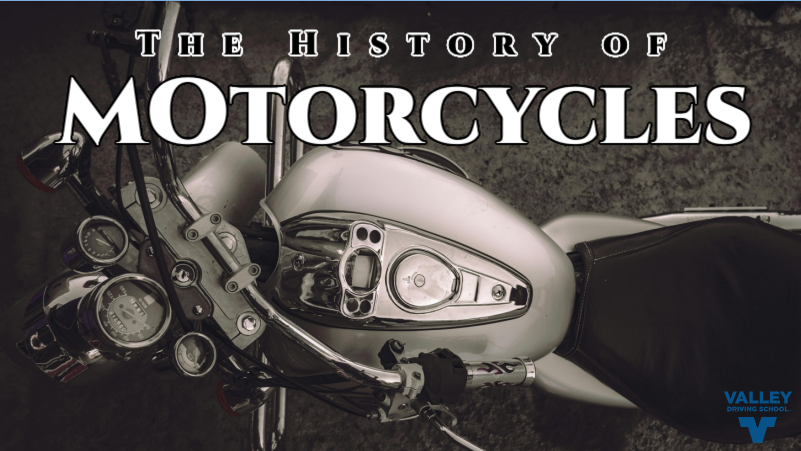
The motorcycle as it’s known today has captivated the globe for over a century as an unorthodox and daring statement of character, transportation, and attitude. Motorcycles have directed and helped to shape the personal mantras of many world leaders, revolutionaries, war heroes, and pop culture icons, laying the groundwork for alternative perceptions and roads less taken. To say the motorcycle is a simple mode of transportation isn’t just foolhardy, it’s flat out incorrect.
Thanks to motorcycles, human beings have developed personal relationships with sculptures of metal, giving machines human characteristics, personalities, and cultures of their own - motorcycles, at least our perceptions of them, have become human; full of emotion, flaws, and spirit.
What’s perhaps most interesting, is that no one person can lay claim to the invention of the motorcycle. The beginnings of two-wheeled motorsport have global roots and a collective memory. The motorcycle, therefore, could be referred to as the globe’s first collaborative effort.
19th Century
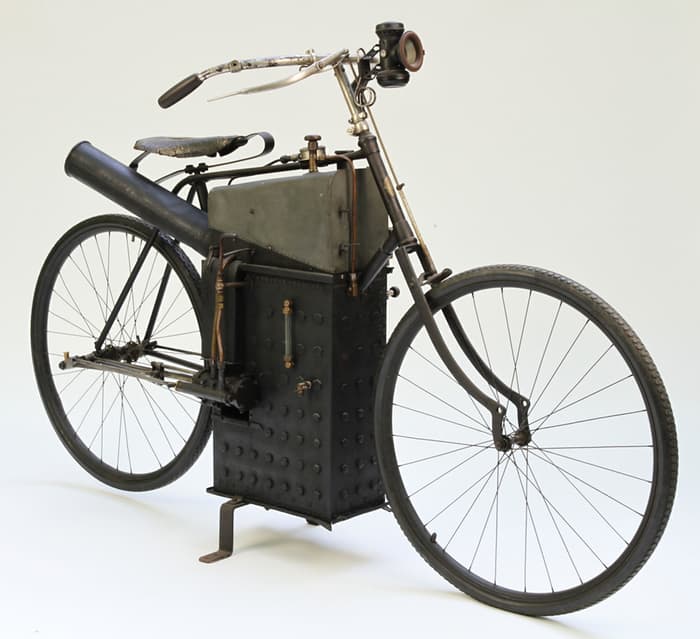 In the mid to late 1800's, the industrial revolution began to change the very thought processes of human beings. Speed and efficiency became obsessions, and the advent of the motor car was a true turning point for speed, transportation, and accessibility. The coal-fired steam engine is credited as powering the first ever definition of a motorcycle. In 1867, American named Sylvester Howard Roper attached a small 2 cylinder coal-fired steam engine to a velocipede - an early bicycle wherein the pedals are attached to the front wheel, rather than to the rear wheel via a belt or chain. Roper is also credited as the inventor of the steam-powered car.
In the mid to late 1800's, the industrial revolution began to change the very thought processes of human beings. Speed and efficiency became obsessions, and the advent of the motor car was a true turning point for speed, transportation, and accessibility. The coal-fired steam engine is credited as powering the first ever definition of a motorcycle. In 1867, American named Sylvester Howard Roper attached a small 2 cylinder coal-fired steam engine to a velocipede - an early bicycle wherein the pedals are attached to the front wheel, rather than to the rear wheel via a belt or chain. Roper is also credited as the inventor of the steam-powered car.
At roughly the same time across the pond, a Frenchman named Ernest Michaux attached a steam engine to a more advanced velocipede designed and built by his father, Pierre Michaux. Ernest's motorcycle featured a single cylinder and was fired by alcohol, rather than coal, and was connected to the front wheel via a twin belt drive. In 1881, Arizona-based inventor, Lucius Copeland cobbled together a small steam boiler capable of driving the rear wheel of a bicycle - all the way to an impressive 19 km/h. Copeland was the first to call a motorized bicycle a “Moto-cycle” after he founded a manufacturing company in 1887 - although it was a three-wheeler.
Over the next decade leading into the 1900's, various different bike contractions were released with various methods of powering their propulsion - some with compressed air, mechanized clockwork, and even hydrogen gas.
The first widely accepted motorcycle power by a gasoline engine the in 1886, thanks to German engineer Gottlieb Daimler and his partner, a German engine designer and industrialist, Wilhelm Maybach. These are the sparks behind present day automobile superpower, DaimlerAG, the parent company of Mercedes-Benz and Maybach. This marks the spot in history that the gas-powered engine and the motorcycle collide, generally attributing the Daimler Reitwagon, as the first true motorcycle in 1885.
Daimler used the first-ever developed four-stroke internal combustion engine released in 1876 to power his new motorcycles. The engine was developed by engineer Nicolaus Otto, a former employee, who named it the Otto Cycle Engine. This early iteration of the modern motorcycle included a primitive, but first-ever, two-speed transmission and the inclusion of the newly invented inflatable tires to help absorb the pain of bumpy roads.
The 20th Century
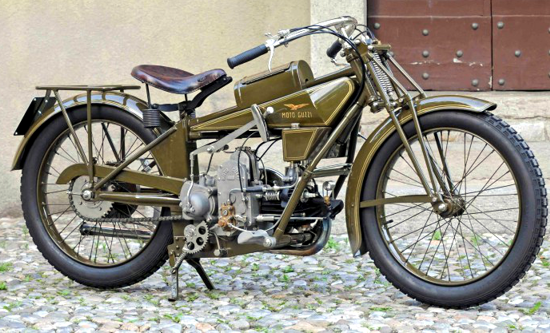 While most bike designs were isolated to France and Germany at this time, the Brits and Americans were quick to catch up as the twentieth century rolled on. Motorcycle manufacturers began popping up on both sides on the pond. The single cylinder, single speed transmission model was most prevalent, but the evolution of the motorcycle wasn’t slowed by the inabilities of its creators; many groups began experimenting with advanced engineering designs like overhead cams, additional gears and clutches. These advanced models were only slowed by the economic hardships of the times, with legendary motorcycle authoritarian and historian, Mick Walker, citing insufficient materials and high costs of production as the major setback of this time period.
While most bike designs were isolated to France and Germany at this time, the Brits and Americans were quick to catch up as the twentieth century rolled on. Motorcycle manufacturers began popping up on both sides on the pond. The single cylinder, single speed transmission model was most prevalent, but the evolution of the motorcycle wasn’t slowed by the inabilities of its creators; many groups began experimenting with advanced engineering designs like overhead cams, additional gears and clutches. These advanced models were only slowed by the economic hardships of the times, with legendary motorcycle authoritarian and historian, Mick Walker, citing insufficient materials and high costs of production as the major setback of this time period.
Nevertheless, riders began using motorcycles for more than just transportation - this is where racing, recreation, and sport began to take off. The competitiveness and fun of 20th-century bikes bred the perfect environment for faster, more powerful bikes that were more comfortable and versatile than their predecessors. Sales and popularity took off in the 1910's and 1920's. Notable big name brands like the British Triumph, Italian Moto Guzzi, German BMW, and the quintessential American motorcycle rivalry between Harley-Davidson and Indian Motorcycles started to blossom. This era, and these bikes ushered in a sense of style and character that has epitomized the spirit of the motorcycle through time.
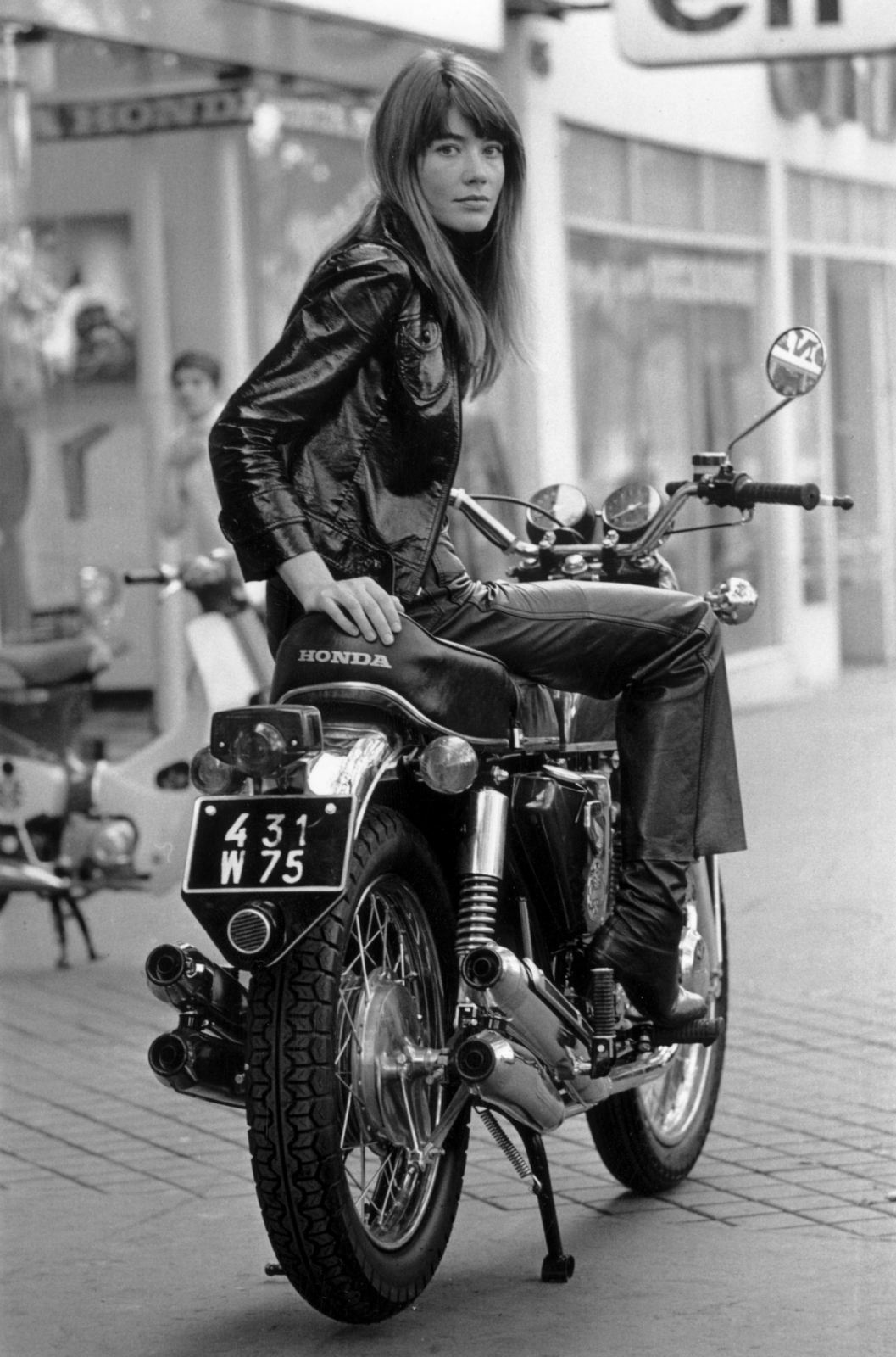
Two-cylinder motors, now referred to as V-Twins were experimented with, and even the odd four-cylinder motor was toyed with in an effort to increase power. When World War One began, the motorcycle had evolved into a speedy and reliable method of transportation that grabbed the attention of many infantrymen and the world. Following this boom of popularity, the Great Depression of the 1930's saw many bike manufacturers go belly up. The American industry rode its alluring reputation into the 1950's by the skin of its teeth, while European bikes remained the centre of the transportation game. This would end very soon, as the car was gaining traction with growing families and suburban lifestyles post-war.
What the motorcycle needed, was an image upgrade.
The Foundations of Culture & Style
The 1950's, 60's and 70's are the textbook era of revival, creativity, attitude, and revolution. The world would soon be thrust into a time of re imagination; new ideas and perspectives that had been brewing and festering for the last two decades would finally see the light of day in the 50's and 60's - and the motorcycle had its own profound effects on the people and attitudes that would soon reshape the globe. Motorcycle culture would begin to take root in societies around the world, varying region by region, but all sharing a commonality in counterculture, rebellion, and style.
Many of the political and cultural icons of the first half of the 20th century developed their own personal sense of independence, power, and grandeur thanks in part to the essence of riding a motorcycle.
Lawrence’s Sons of Thunder
T.E. Lawrence, a British archeologist, military officer, diplomat, writer and motorcycle rider offered his mesmerizing account of the world in his book, Seven Pillars of Wisdom, an autobiographical account of his involvement in the Arab Revolt, where he was stationed as an officer in the British forces in 1916. This book earned him fame and an international title as Lawrence of Arabia. Lawrence rode and owned 8 Brough motorcycles, and even died in 1935 while riding George V, his British Brough Superior SS100 - one of the first bikes recorded at 100 mph - becoming an influential voice with the postwar British public thanks to his vivid war-time writing.
Lawrence nicknamed all his Brough’s his Boanerges, a biblical name meaning "Sons of Thunder." Of his bikes, he once said, "a skittish motorbike with a touch of blood in it is better than all the riding animals on earth, because of its logical extension of our faculties, and the hint, the provocation, to excess conferred by its honeyed untiring smoothness."
The Ace Cafe and the Ton-Up-Boys
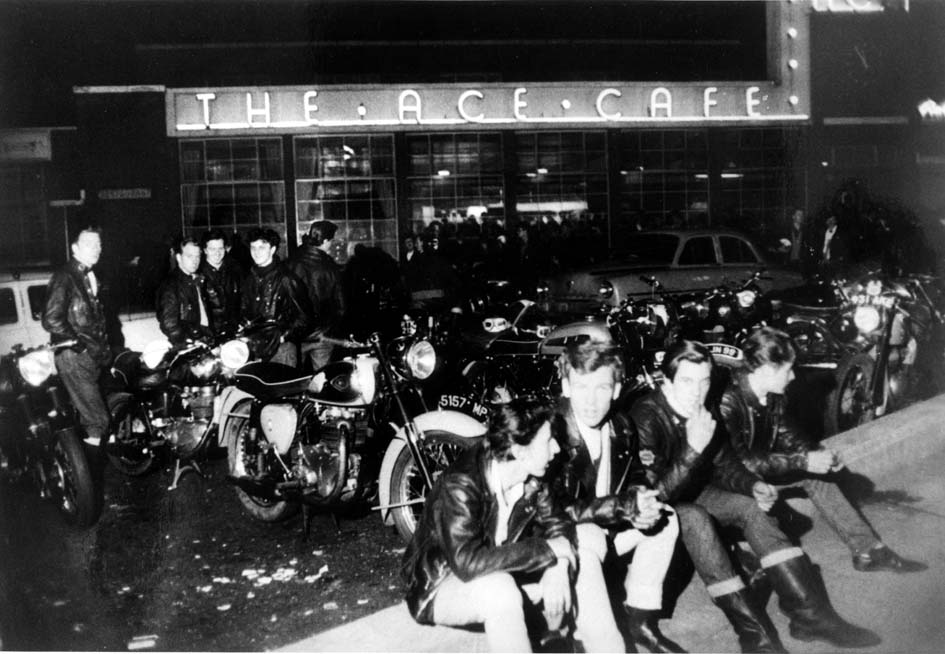
The British love affair with the motorcycle soon gave way to a cultural phenomenon that’s since spread across the globe, epitomizing the coming-of-age attitude of legions of young riders. The Ace Cafe has been a stronghold of motorcycle history, culture, and lore for generations. Originally built as a truck stop in the late 30's, the Ace was destroyed by a German air raid in 1940 and rebuilt in 1949 where the infamous Ton-Up-Boys rocker subculture of North London took refuge under its roof.
Rock and roll, racing, leather jackets and the booming British motorcycle industry gave rise to a unique style of bike, the Cafe Racer, of which cafe patrons would challenge each other to races ‘round the block. A juke box rock song would be played and a racer would have to successfully depart and arrive back to the table before the song would end. The Cafe style bike helped the British scene develop a sense of identity that rivaled the American ‘outlaw' brand of riding, uniting bikers in the counterculture.
Latin Liberation
In 1953, the Cuban Revolution begins - a revolt against foreign oppression of Cuban soil by the Castro brothers and an Argentine doctor named Ernesto ‘Che’ Guevara. Guevara’s left-wing socio-political Marxist ideologies were first shaped by a South American motorcycle trip aboard a single cylinder 1939 Norton 500cc affectionately named La Poderosa, The Mighty One, that took him from his home in Buenos Aires to Chile, Perú, Ecuador, Colombia, Venezuela, and Panama. Guevara recorded a powerful memoir of his motorcycle voyage in the Motorcycle Diaries: Notes on a Latin American Journey; encountering foreign interest, poverty, suffering, and inequality, Guevara’s Norton helped shape - in however small a role - the eventual Cuban Revolution and a distinct socio-cultural shift in the western world.
The Outlaws
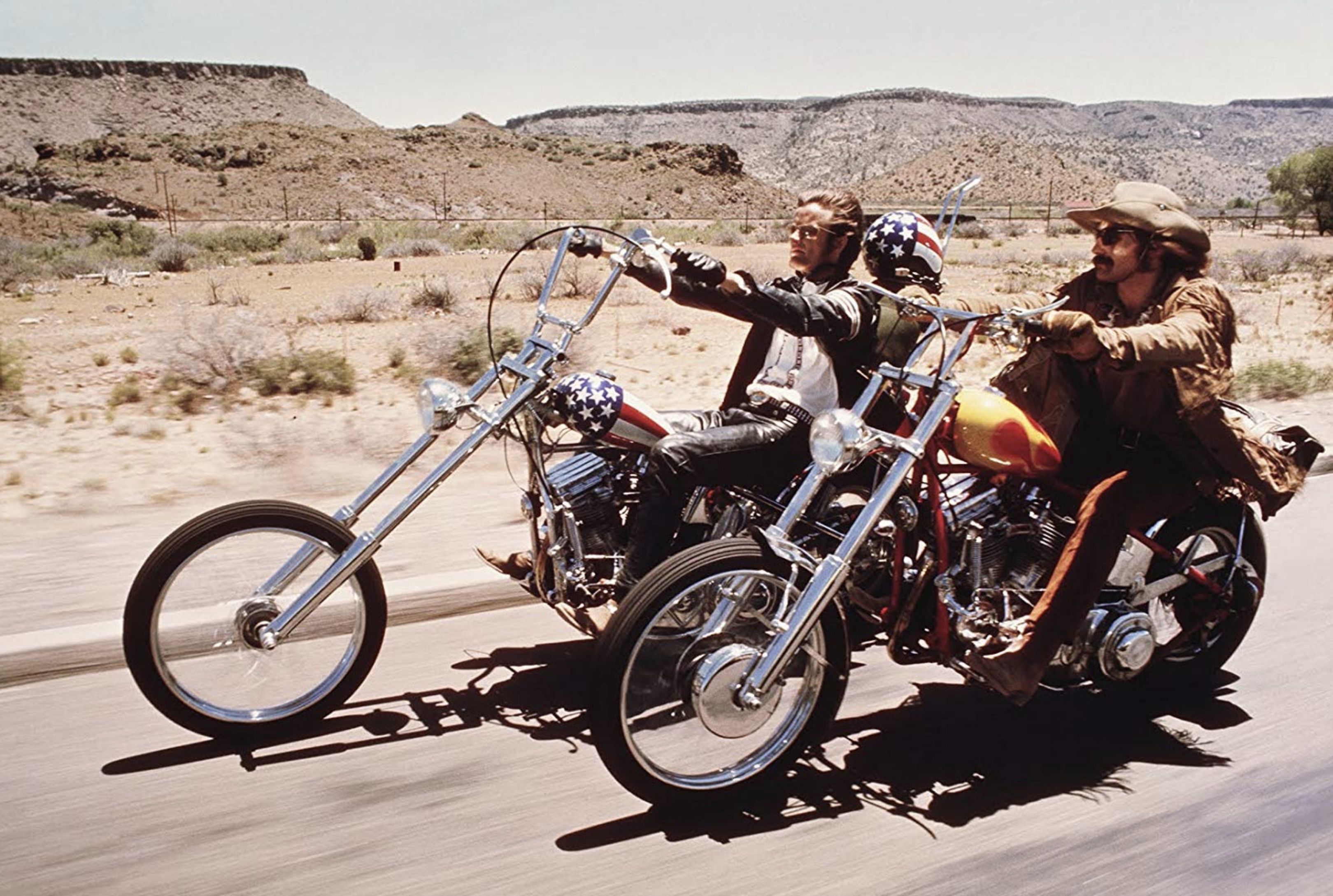
Peter Fonda’s Easy Rider. Hunter S. Thompson’s account of the Hell’s Angels, Rock and Roll, lawlessness, freedom - all stereotypicalmedia-induced denominations of the typical outlaw biker. Of these examples, motorcycles and their riders were forever cemented as road-thrashing freedom-seekers, synonymous with the open road.
We’ll allow one of the most iconic motorcycle movie scenes in pop culture history speak for itself. From 1969’s Easy Rider.
George: Oh, they're not scared of you. They're scared of what you represent to 'em.
Billy: Hey man. All we represent to them, man, is somebody needs a haircut.
George: Oh no. What you represent to them is freedom.
Billy: What the hell's wrong with freedom, man? That's what it's all about.
George: Oh yeah, that's right, that's what it's all about, alright. But talkin' about it and bein' it - that's two different things. I mean, it's real hard to be free when you are bought and sold in the marketplace. 'Course, don't ever tell anybody that they're not free 'cause then they're gonna get real busy… to prove to you that they are. Oh yeah, they're gonna talk to you, and talk to you, and talk to you about individual freedom, but they see a free individual, it's gonna scare 'em.
Inquiry Into Values
A work of fictionalized autobiography, Robert Pirsig’s iconic 1974 book, Zen and the Art of Motorcycle Maintenance, sold over 5-million copies worldwide upon its release as a philosophical work which investigates the metaphysics of quality; how humans perceive and give value to aspects of their lives. Pirsig uses a story of a 17-day motorcycle trip from Minnesota to Northern California he undertook with his son and two friends as a pretext for contrasting romanticism and classicism, as well as the concept of quality - which Pirsig argues is undefinable.
Pirsig used the motorcycle as a backdrop for shifting ideologies and value systems emerging in societal consciousness. The motorcycle, therefore, becomes a vessel for spontaneity, freedom, and of inherent value and worth. He found in contrasting visions of quality, a common ground between Western and Eastern worldviews. The book's popularity catapulted widespread interest into readdressing one’s life, helping shape a newfound outlook that life is what you make it. Pirsig famously said, “In a car, you're always in a compartment, and because you're used to it you don't realize that through that car window everything you see is just more TV. You're a passive observer and it is all moving by you boringly in a frame. On a cycle, the frame is gone. You're completely in contact with it all. You're in the scene, not just watching it anymore, and the sense of presence is overwhelming.”
Competition Comes Knocking
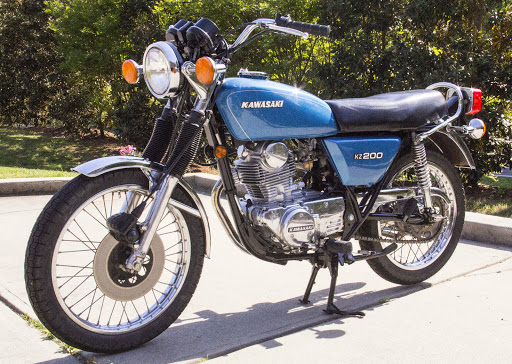 By the 1960’s, the Japanese had built and mastered the engineering of superb motorcycles, unbeknownst to the American or European markets. Japanese bikes including Honda, Kawasaki, Suzuki, and Yamaha experienced very slow sales upon their release in the west but soon caught the Americans and Europeans off guard with their superior, sophisticated bikes. They easily outmatched the quality, technology, and performance of domestic models.
By the 1960’s, the Japanese had built and mastered the engineering of superb motorcycles, unbeknownst to the American or European markets. Japanese bikes including Honda, Kawasaki, Suzuki, and Yamaha experienced very slow sales upon their release in the west but soon caught the Americans and Europeans off guard with their superior, sophisticated bikes. They easily outmatched the quality, technology, and performance of domestic models.
But, what’s good for the Goose is good for the Gander, as they say. Increased competition meant increased sense of purpose and innovation amongst the established motorcycle manufacturing industry. Racing and competition again became a focal point of motorcycle riding, with horsepower, torque, and speed at the forefront of importance. Along with power, came vastly refined suspension, handling, and braking.
Shake Hands and Play Safe
By the time 1970 came around, Honda introduced its revolutionary transverse four-cylinder, four stroke engines which changed the landscape of motorcycles, again, forever. Competition increased, again, and when the legendary Suzuki Hayabusa reached a speed exceeding 310 km/h, forced a gentleman’s agreement between manufacturers in 1999, fearing a ban or regulatory measures on Japanese and European bikes, agreed to limit machines to 300 km/h.
Today, motorcycles come with more technological advances and features that their originators could ever have dreamt of. The bikes themselves have changed dramatically, but the zest for life so closely tied to riding a motorcycle, inside the scene, as Pirsig would say, has remained constant. Motorcycles are special because they epitomize the bond between man and machine, a symbiotic relationship that's always, at its very core, been about respect, style, and - above all else - a feeling of freedom.
Ride safe. One down, four up.

